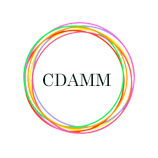
Introduction
The notions of apocalypticism and millenarianism have various scriptural roots in Christianity and have appeared in different ways in cultures shaped by Christian theological claims and spiritual sensibilities. Against this sociohistorical backdrop, we may inquire into whether there are any Indian or South Asian parallels for these two notions. The search for such ‘conceptual equivalences’ across Indic and European cultural borderlines is, of course, a translatory exercise, where much depends on how these notions are understood in the contexts of European Christianity. As we say, a lot of meaning is lost in translation, but this semantic loss should not blind us to the possibility that new layers of significance can be sometimes found in the process.
Generally speaking, what we do not find across Indic traditions is the intense fervour associated with apocalyptic or millenarian groups in Christian history, such as the Anabaptists in the sixteenth century, the followers of William Miller, and so on. More precisely, we do not find beliefs in a remnant—call it ‘the elect’—who are undergoing oppression in the current age and who, through their vigorous activity of cleansing, initiate a new age of peace and prosperity. In other words, this remnant is the site of a dramatic rupture on the eschatological horizon of the ‘end times,’ which is a period as much of trial and tribulation as of the implementation of the transhistorical divine promise in and beyond human history. The end is now, and this somewhat paradoxical concurrence of future and present generates an existential urgency on the horizon of imminence.
At the same time, there are some vocabularies and imageries that Hindu cosmological visions share with Jewish or Christian eschatological descriptions. As we will see, these include destruction and reconstruction of the world, though this occurs over several cosmological cycles in Hindu understandings. This can include a form of messianism in understandings of Kalki (see below) descending at the end of the era of darkness upon a white horse and carrying a fiery sword.

The ‘End Times’ in Hinduism
In looking for conceptual analogues of ‘apocalypticism’ or ‘millenarianism’ in Hinduism, we may begin by noting two crucial dimensions of a fairly common Hindu understanding of temporality: (i) we are living in the most morally and spiritually degenerate age and (ii) this condition will lead to a cosmic destruction which will be followed by the reconstruction of a golden age. What is distinctive about the Hindu picture is that while Christianity operates with a one-life narrative, Hindu mythic-history operates with a multiple-life narrative. More bluntly, in Christianity you have only one chance—namely, the current one—to get it right, whereas in Hinduism the human project of moral purification can take you across multiple life-chances. This means that the destruction and the reconstruction of the world, from a cosmological perspective, takes place not just once but several times.
The Hindu religious traditions teach that there is no absolute beginning to the temporal process, and the world is without a chronological beginning (anādi). Rather, there are repeated creations (punar-sṛṣti) and repeated dissolutions (punar-pralaya) which recur over cosmological cycles spanning immense durations of time. In the Sanskrit texts known as the Purāṇas (c. 300 CE–1000 CE) and epic narratives such as the Mahābhārata, we are given rich descriptions of the periodic manifestations, destructions, and recreations of the universe (González-Reimann 2002; Malinar 2007). Each world-cycle is said to last for 4,320 million years and is subdivided into the smaller periods of four ages (yugas) called satya, tretā, dvāpara, and kali. The first yuga—namely, satya—is the period when virtue flourishes and the dharma—namely, cosmic order and human morality—is followed. As we move into the next yuga, tretā, there is a deterioration of human conduct. In the third yuga, dvāpara, righteousness and unrighteousness exist side by side. Finally, in the fourth kali yuga, the morally degenerate age of darkness that we are living in, there is an overwhelming pervasiveness of evil, and this signifies that the full round of the four yugas called a mahāyuga is coming to its end. A thousand of these mahāyuga constitutes one aeon (kalpa) and this aeon is equal to one ‘day’ of the god Brahmā and a similar length of time is the ‘night’ of Brahmā. The phenomenal world is manifested during a ‘day’ of Brahmā and remains in a state of dissolution during a ‘night’ of Brahmā. This process is repeated until Brahmā completes one hundred ‘years’ and then Brahmā too is absorbed into the supreme principle, Brahman. Thereafter, from this divine principle, Brahman, the new world of pristine purity—that is, the satya yuga—is again generated. The soteriological doctrines of multiple styles of Vedāntic Hinduism—roughly, the philosophical and theological teachings of Hinduism—are elaborated against the background of this cosmological scheme (Lott 1980; Balslev and Mohanty 1993).
Crucial to this understanding of time is the symbolism of the cosmological processes as a circle/wheel. Liberation (mokṣa) is the freedom from existence within this circle/wheel of births, deaths, and rebirths called saṃsāra. The principle of karma states that on the basis of the moral quality of our deeds, thoughts, and desires in the present state of embodiment, we shall be reembodied in a condition in which we shall have to actualise the ‘fruit’ of the reward or punishment that we have deserved. Our ‘body,’ in both the immediate sense of our physiological constitution and dispositional propensities and the wider sense of our material and social environment, is the result of our moral or immoral actions in previous existences. So, we can think of karma as a form of moral causation operating through the cycles of cosmological time (Reichenbach 1990). Here, ‘cyclical’ does not mean that the next world-order will be identical to the present world-order. Those individuals who have become liberated in this lifetime (that is, attained mokṣa) will not return to the next world-order. Again, Hindu texts repeatedly emphasise that a human rebirth is extremely rare in the vast cosmological cycles and so one should not fritter it away by remaining immersed in worldliness; so, the cyclical understanding of temporality incorporates a linear aspect of the arrow of time.
In sum, we are understood to be living in an age of depravity, and this condition will lead to a cosmic destruction which will be followed by the golden age. In a form of Hinduism called Vaiṣṇavism, we find a dimension which is even more resonant with Christian apocalyptic visions. In one standard account, the supreme God Viṣṇu is said to have ten avatāras—the Sanskrit word avatāra, which means a ‘descent,’ is sometimes translated as ‘incarnation’ (Matchett 2013). The theological claim is that whenever there is a decline of dharma, the divine reality descends to the depths of human history to protect the good and restore dharma out of the abyss of anti-dharma. Of the ten avatāras, the tenth is yet to arrive. This is Kalki who will descend at the end of the kali yuga, riding a white horse and wielding a fiery sword.

Comparison
To return to the theme of translation with which we started, we see that there are some conceptual resonances across Christian and Hindu borderlines with respect to the themes of ‘apocalypticism’ and ‘millenarianism.’ To repeat, much depends on what these two terms mean. The Oxford English Dictionary (OED) defines the term ‘apocalypticism’ as a belief that is especially “based on an expectation of the imminent end of the present world order.” The OED’s definition of ‘millenarianism’ has two dimensions—one, which applies specifically to Christianity, is, “the belief in a future thousand-year age of blessedness, beginning with or culminating in the Second Coming of Christ”; the other, that is said to reflect “extended use,” is a “belief in a future golden age of peace, justice, and prosperity, typically posited on an end to the existing world order.” Crucially, these definitions do not offer a temporal qualification, such as “after this chronological marker, there will be no further world-like conditions.” however, we may read this qualification as implied in the definitions. On the view that lexical entries are not prescriptive (about how the speakers of a particular language must or must not use a word) but descriptive (of sociolinguistic patterns of how they tend to use a word), there seems to be some conceptual leeway for tracing lineaments of ‘apocalyptic’ and ‘millenarian’ visions across Hindu traditions.

References
Balslev, Anindita and Jitendra Mohanty, eds. 1993. Religion and Time. Leiden: Brill.
González-Reimann, Luis. 2002. The Mahābhārata and the Yugas: India’s Great Epic Poem and the Hindu System of World Ages. New York: Peter Lang.
Lott, Eric. 1980. Vedāntic Approaches to God. London: Palgrave Macmillan.
Malinar, Angelika, ed. 2007. Time in India: Concepts and Practices. New Delhi: Manohar.
Matchett, Freda. 2013. Krishna, Lord or Avatara? The Relationship between Krishna and Vishnu. London: Routledge.
Reichenbach, Bruce R. 1990. The Law of Karma: A Philosophical Study. London: Macmillan.







